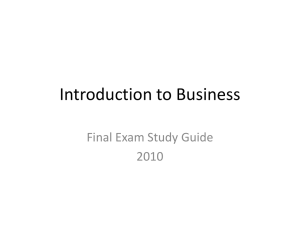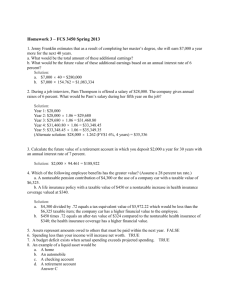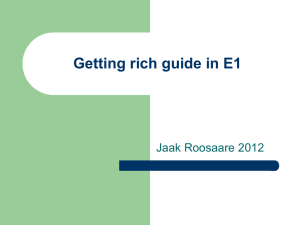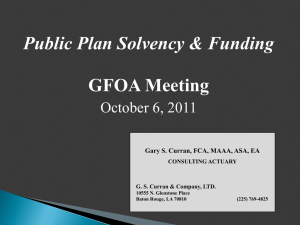Concept of Accounting And Review Of Balance Sheet
advertisement
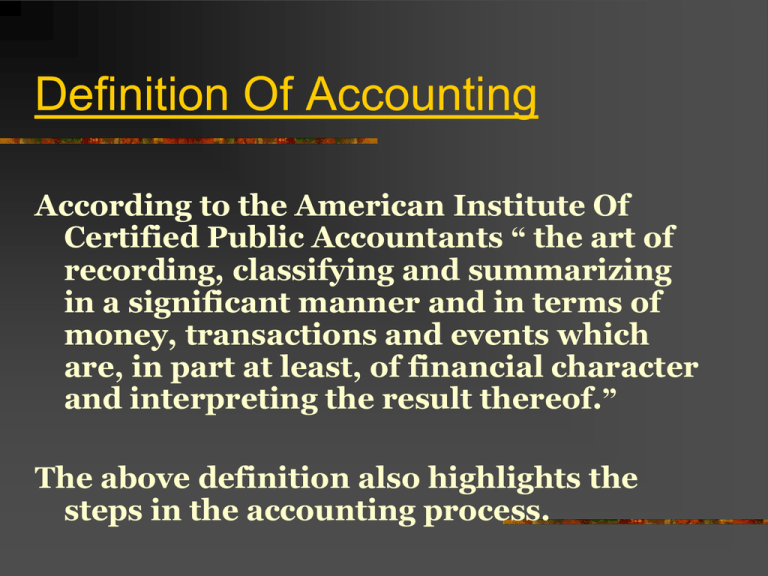
Definition Of Accounting According to the American Institute Of Certified Public Accountants “ the art of recording, classifying and summarizing in a significant manner and in terms of money, transactions and events which are, in part at least, of financial character and interpreting the result thereof.” The above definition also highlights the steps in the accounting process. Accounting Concepts, Conventions, Bases & Policies Concepts vs Conventions Concepts are the basic ideas, the theories on how and why certain categories of transactions should be treated in a particular manner. Once the theories have been established and tested and proved to be acceptable, the task of the Conventions is to set out the limit of their applications. Accounting Concepts 1. Business Entity Concept – business is a separate entity. 2. Money Measurement Concept – money common denominator of measurement. 3. Going Concern Concept – perpetual succession. 4. Accounting Period Concept – predetermined periodicity generally an year. 5. Cost Concept – an asset’s cost is the basis of all subsequent accounting. Accounting Concepts 6. Realisation Concept – revenue should be recognized “when it is earned”. 7. Matching Concept – associating the cause and effect relationship of revenues and expenses. 8. Accrual Concept – similar to matching, period should be decided on the basis of accrual. 9. Dual Aspect Concept – 2 aspects must be examined – the giving and the receiving. Accounting Conventions 1. Consistency – method once adopted should be followed. 2. Disclosure – all relevant facts concerning financial position must be communicated to users. 3. Materiality – concerned with significant information. 4. Objectivity – unbiased and subject to verification by external expert. 5. Stable Monetary Unit – the Indian Rupee. 6. Conservatism or Prudence – when in doubt, choose the solution that is least likely to overstate net assets and net income for the current period. Accounting Bases and Policies Accounting bases are the methods which have been deployed for applying fundamental accounting concepts to financial transactions and items. Eg. Depreciation and Inventory. Accounting policies are the specific accounting bases selected and consistently followed by a business enterprise. Some Important Terminology Of Accounting Assets : The economic resources which are owned by a business and are expected to benefit future operations. Assets may have definite physical form, such as buildings, machinery or merchandise. Equity : this is the claim against the assets owned by the business. Equities or claim against the assets indicate the sources from which the assets of a business were obtained. Continued….. Liabilities : liabilities are the debts owed by a business to out side parties ( called creditors ). This includes amount owed to suppliers for goods or services purchased amount borrowed from banks or other lenders, salaries and taxes due but not paid. Net worth : the term net worth, proprietorship, owner’s investment, or capital– all have the same meaning in accounting : namely, the owner’s equity or interest in the assets of the business. It is the difference between what the business owns and what it owes. Continued….. Revenue : It may be defined as the inflow of cash assets resulting from the sale of goods and services in the ordinary course of business. For eg., interest received on investments, commission received, rent received etc. Revenue cause an increase in capital. Expenses : it may be defined as the cost of the goods and services used up in the process of obtaining revenue. Example include - the cost of goods sold, wages and salaries of employees, charges for news paper, advertising etc. BALANCE SHEET Introduction : A balance sheet is a classified summary of the balances remaining open in a set of books after the preparation of the trading and profit & loss account. It shows the financial position of a business at a particular moment in time. It is a snapshot of the financial condition of the business and hence it is also known as the ‘mirror’ of the business. The Accounting Equation ASSETS= LIABILITIES +CAPITAL Or CAPITAL = ASSETS - LIABILITIES Features of a balance sheet Statement of a financial position. Prepared at a given date. In balance sheet total assets equal total liabilities. Assets are listed on the right side of the balance sheet and liabilities are on the left side. OBJECTIVE OF PREPARING A BALANCE SHEET To disclose the financial condition of a business. Examine the worth of a company and the profitability of the company. PRINCIPLES TO BE OBSERVED IN PREPARING A BALANCE SHEET The first principle to be observed in the preparation of a balance sheet is that the balance of similar significance should be grouped together, and that the balances of dissimilar significance should be stated under separate heads. Eg: plants & machinery, building, sundry debtors, land & building should be grouped in a same group. Continued….. The second principle of accounting relates to “marshalling” . The assets and liability should be arranged in a specific order. This arrangement is called a marshalling. There are three methods for marshalling. Continued….. The first method is to arrange the assets according to their availability to pay off the liabilities i.e those assets which are represented by cash or easily convertible into cash would take the first place while those which are not immediately available for the payment of the liability will take the second place. Continued….. The second method of arranging the item is almost the reverse of the first method. Immovable property should be taken at first place. Moveable assets should be taken on second place. Liquid assets should be taken on third place . Continued….. The third method is a mixture of the first and second methods, assets are arranged in the first method and the liability in the second method. Profit & Loss Balance Sheet It is an account. It is prepared to know the final result of the business. It include only revenue receipts and revenue expenses. It is an statement not an account. It shows the financial position of the business. It includes assets and liability. Profit & loss Balance sheet It is prepared for the particular period. It is prepared on the particular date. The left side of the account is known as debit side and the right side is known as the credit side. Left side is known as the liability side and right side is known as the assets side.




